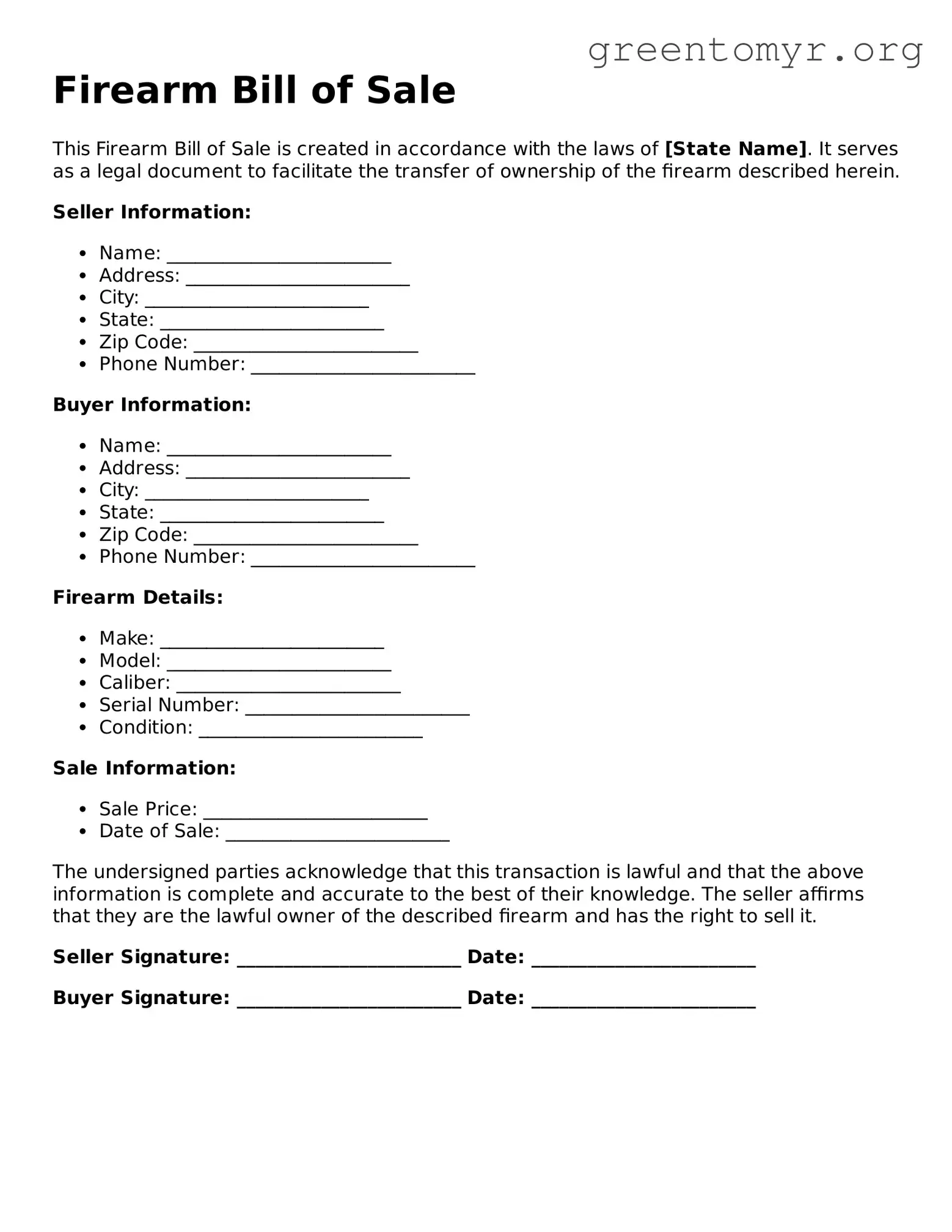What is a Firearm Bill of Sale?
A Firearm Bill of Sale is a legal document that records the sale or transfer of a firearm from one party to another. This form provides proof of the transaction and includes important details about the firearm, such as its make, model, and serial number, as well as the names and contact information of both the buyer and the seller.
Why do I need a Firearm Bill of Sale?
Having a Bill of Sale is crucial for several reasons. First, it protects both the buyer and the seller by documenting the transaction. This record can be helpful in case of any disputes or legal issues that might arise later. Additionally, some states require a Bill of Sale for firearm transfers, making it an essential document to have in compliance with local laws.
A complete Firearm Bill of Sale should contain the following information:
-
The date of the sale or transfer.
-
The names, addresses, and contact information of both the buyer and the seller.
-
Detailed description of the firearm, including the make, model, caliber, and serial number.
-
The purchase price or any trade conditions agreed upon.
-
Any additional terms or conditions pertinent to the sale.
Do both parties need to sign the Firearm Bill of Sale?
Yes, both the buyer and the seller should sign the Firearm Bill of Sale to make it valid. Their signatures indicate that both parties agree to the terms of the transaction. In some cases, it might also be beneficial to have a witness sign, though this isn’t always required.
Is a Firearm Bill of Sale required in all states?
No, the requirement for a Bill of Sale varies by state. Some states mandate it for all firearm purchases, while others do not. It's important to check the specific laws in your state or locality to ensure compliance. Understanding these regulations can help you avoid any potential legal complications during the transfer process.
Yes, you can create your own Firearm Bill of Sale as long as it includes all the necessary information. There are also many templates available online that can make this process easier. Just be sure that whatever form you use adheres to your state's legal requirements, so it stands as a valid document in case it is ever needed for reference.
What happens if I lose my Firearm Bill of Sale?
If you lose your Firearm Bill of Sale, it’s important to keep a record of the firearm's details and any other documentation related to its purchase. Unfortunately, without a copy of the Bill of Sale, proving ownership may become more difficult. If possible, try to track down the seller for a replacement copy, or consider reporting the loss if there are any legal concerns surrounding the firearm.
